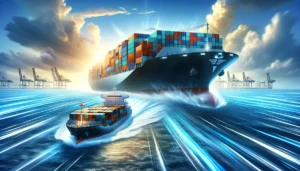Suppliers, Shippers, Manufacturers, and Retailers. These represent just a few cogs in the massive machine known as the “global supply chain” where millions in the industry work to deliver your morning coffee to your table. But what happens when transportation costs like freight rates reach record highs like in September? Hyper price inflation or business as usual?
The answer is probably not what you think according to Craig Fuller, CEO of FreightWaves. He says “transportation costs are approximately up 20% since 2019”, but that these higher costs will not drive hyperinflation in “the short term”. Since transportations costs play only a small part in a product’s total cost, marketing and retail markups are the true drivers for price. Craig notes that “scarcity drives higher prices … not the transportation costs of moving products from manufacturers to consumers.”

Price wary consumers and experienced shippers alike would also be happy to note the improvement these past 40 years had on increasing supply chain efficiency. While it may not seem like it now with port congestion and supply chain disruptions around the world, products that used to take weeks to deliver now only take 1-2 days. This is a significant improvement brought by better supply chain management, systems, and the rapidly transforming digital landscape.
If you’re part of the supply chain industry, it may be well worth it to check out GoFreight which specializes in servicing businesses to join the digital shift through its proprietary logistic software. With top industry veterans providing their expertise in perfecting the perfect logistic software, GoFreight remains the top choice for freight forwarders & NVOCCs to optimize their business and increase revenue. Check out the site here or sign up for a free demo today to learn more.



